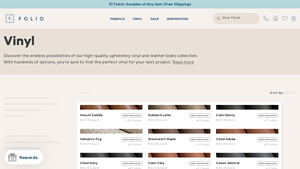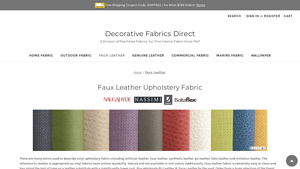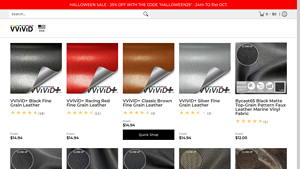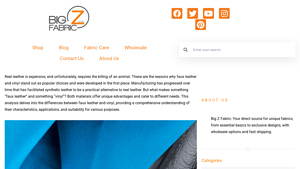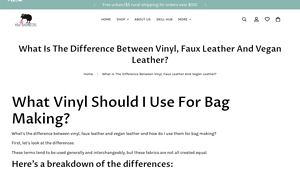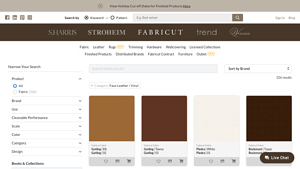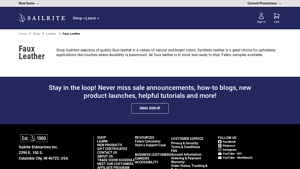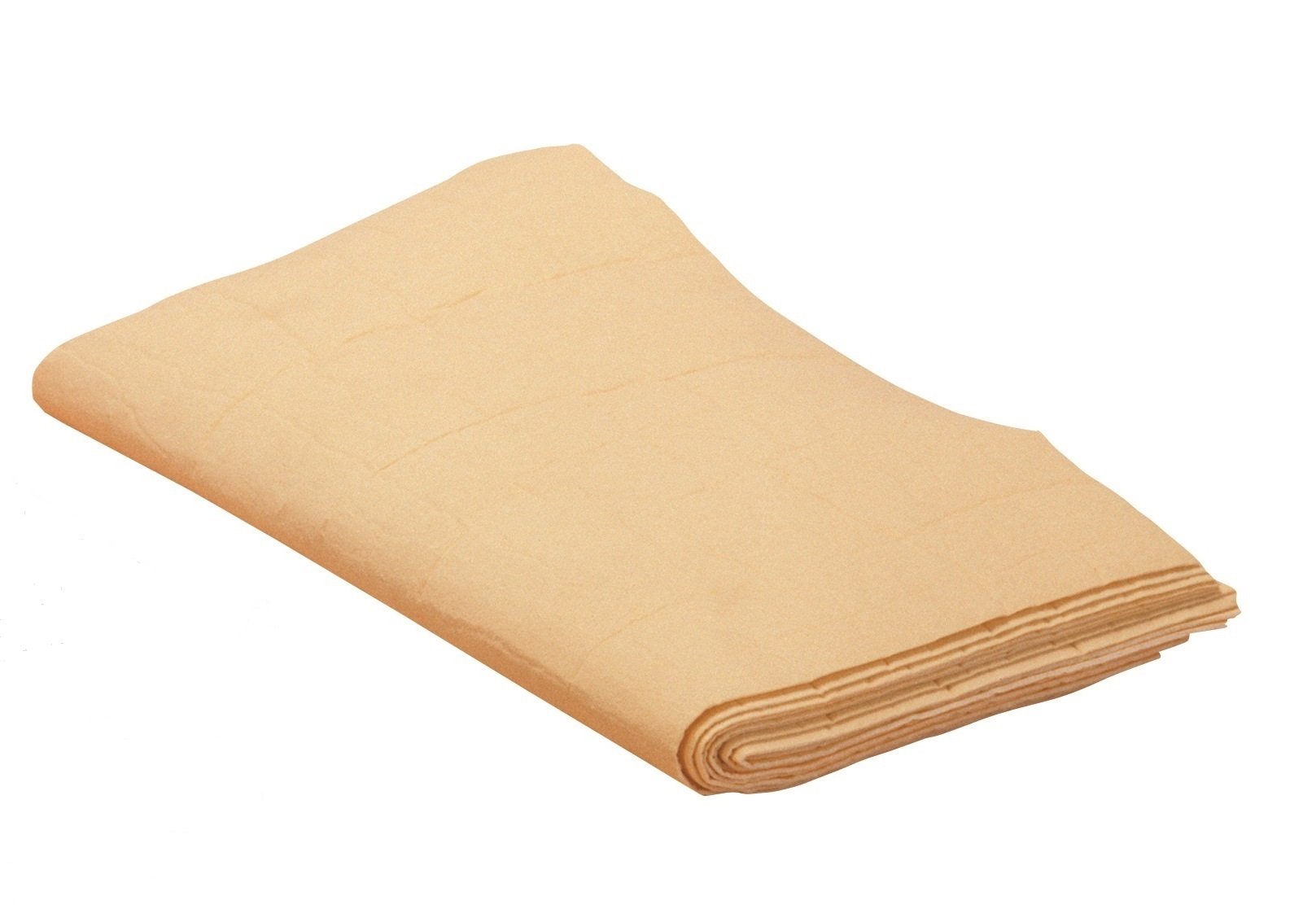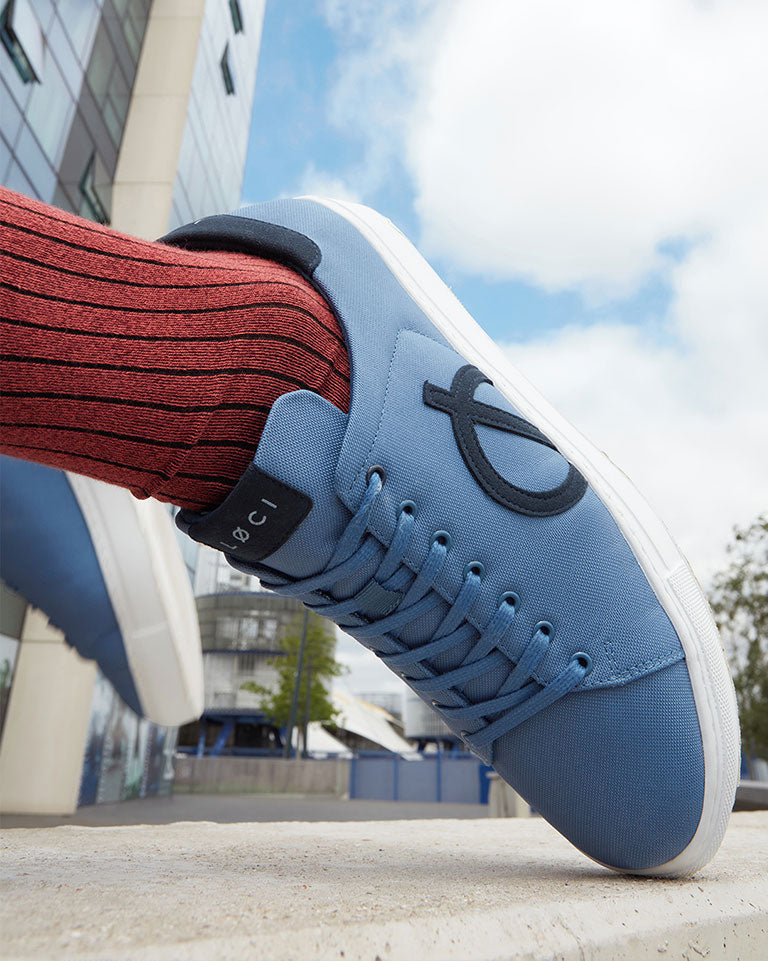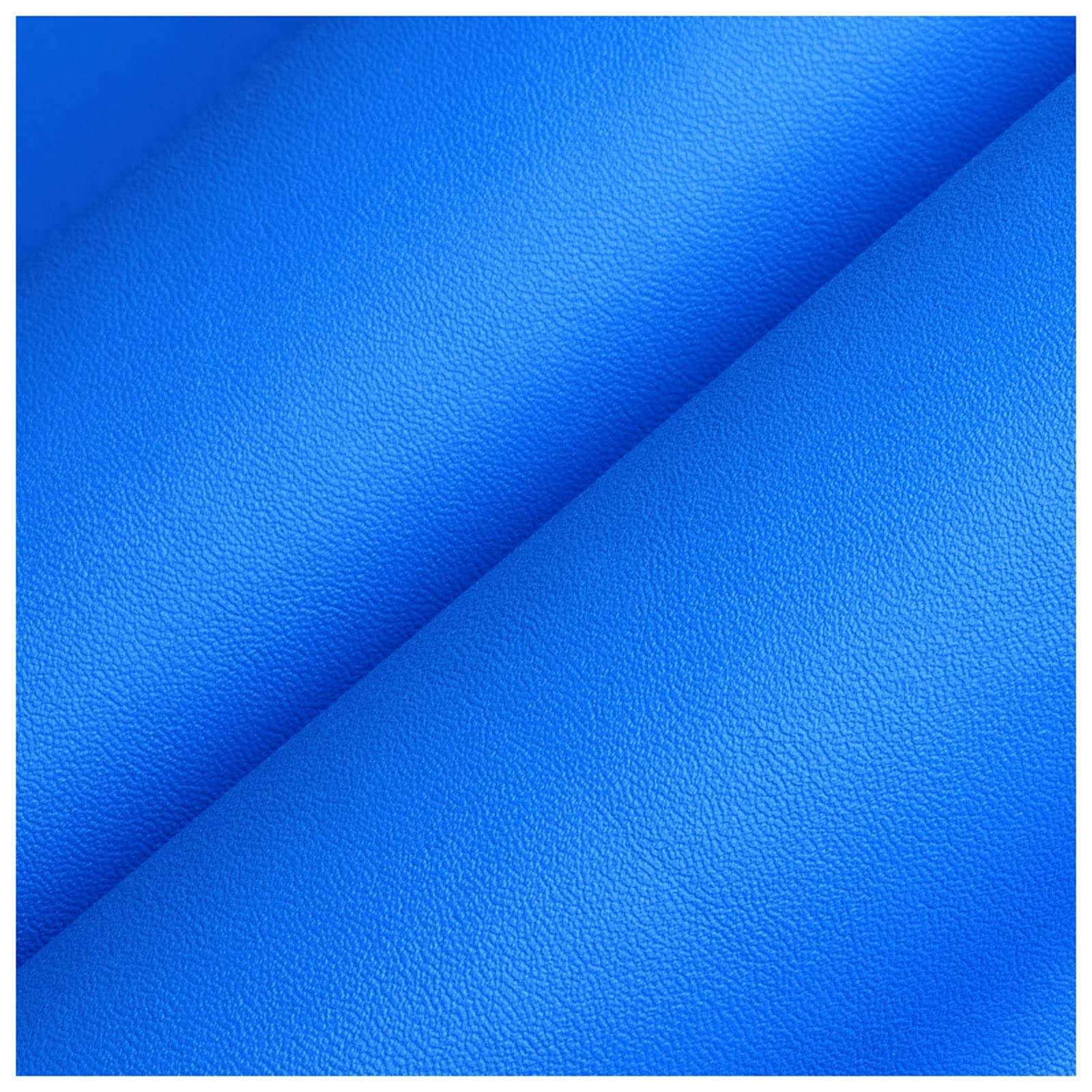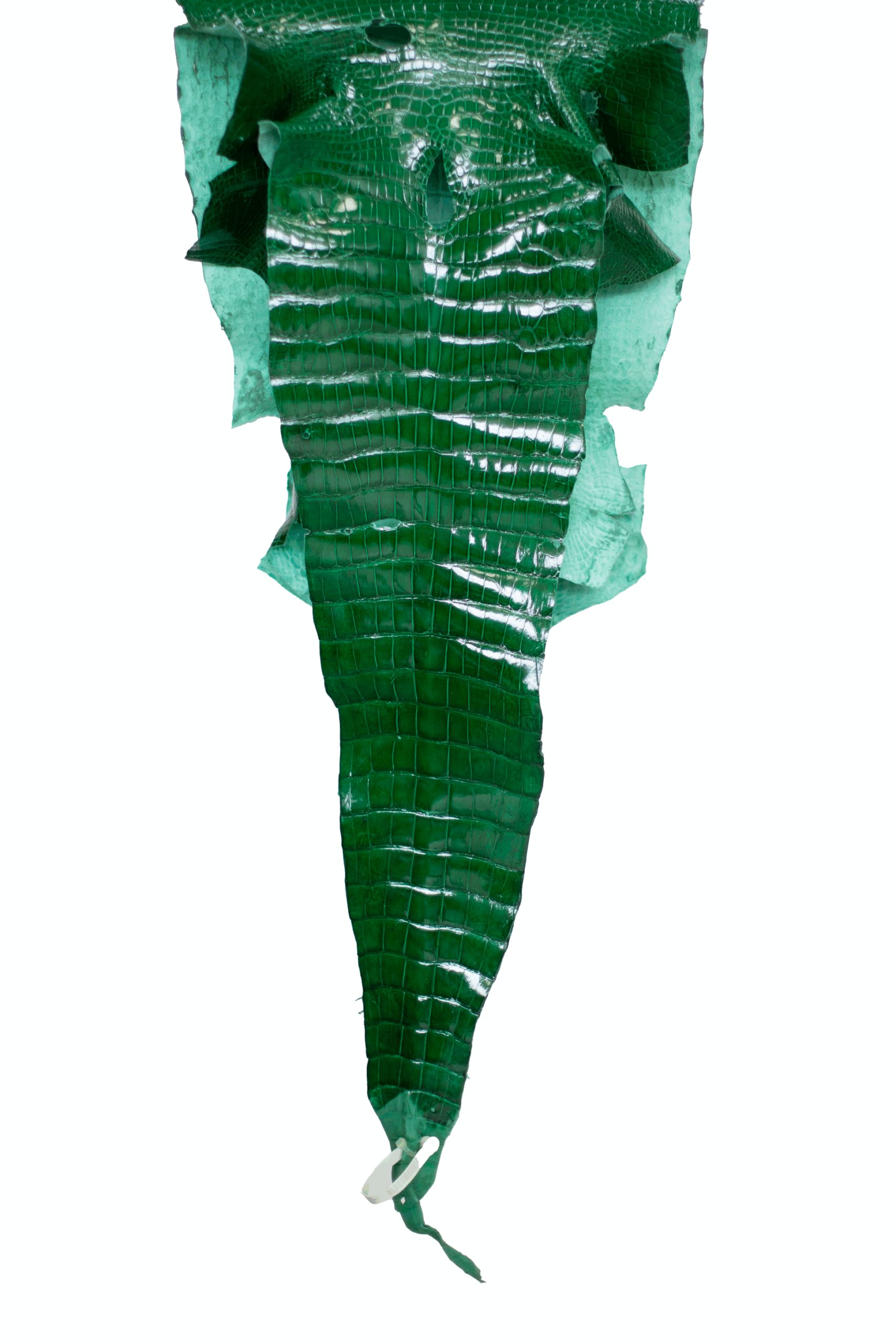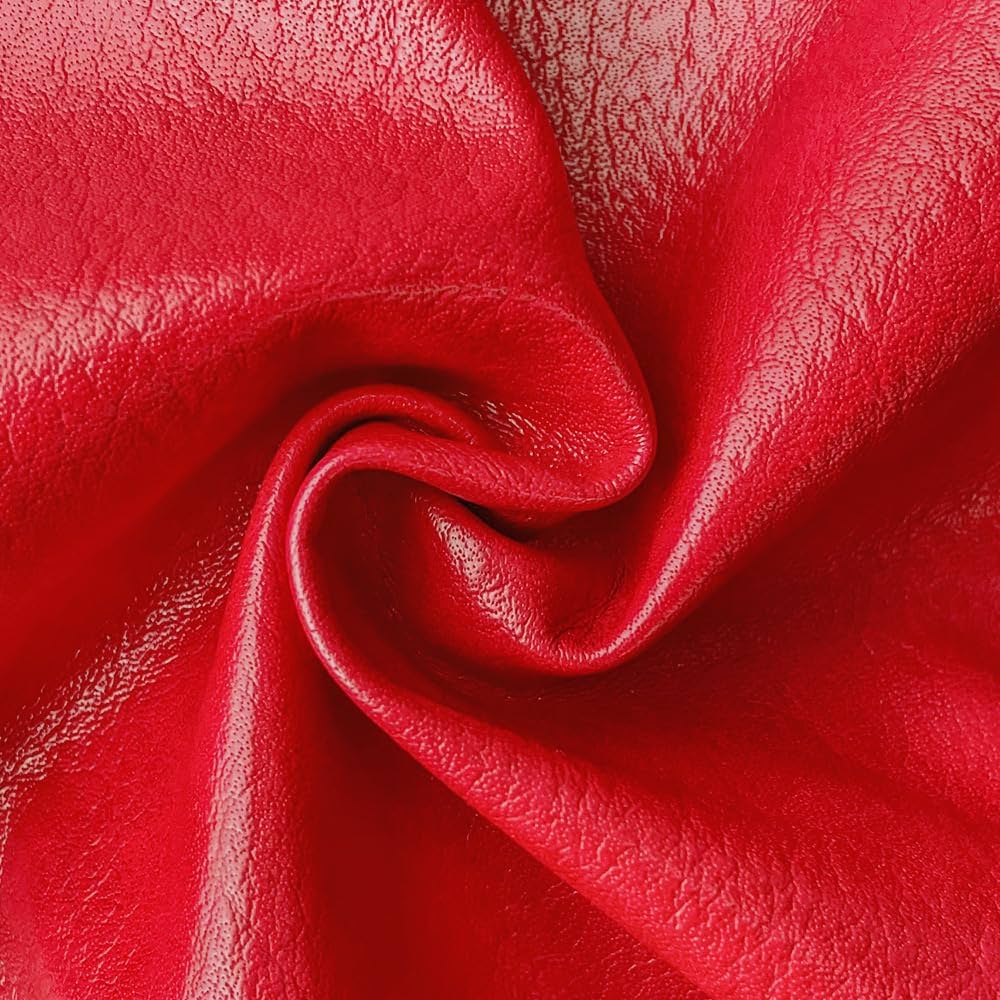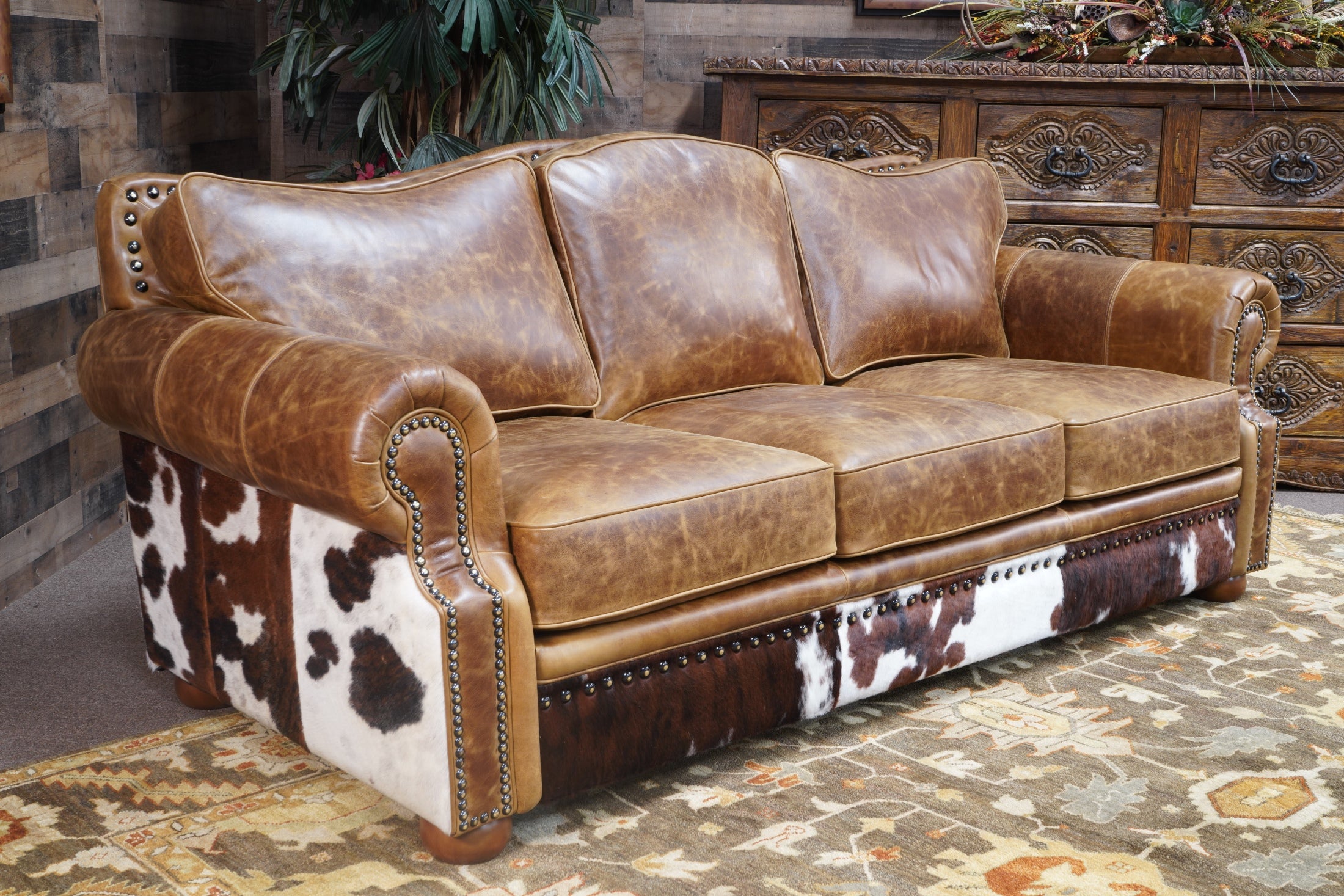Introduction: Navigating the Global Market for vinyl synthetic leather
In today’s competitive landscape, sourcing high-quality vinyl synthetic leather poses a significant challenge for international B2B buyers. Whether you’re looking to manufacture durable upholstery for furniture or stylish apparel, the diverse applications of this versatile material require a nuanced understanding of market offerings. This comprehensive guide is designed to illuminate the multifaceted world of vinyl synthetic leather, covering essential aspects such as types, applications, supplier vetting, cost considerations, and innovative features that enhance product performance.
As global demand for sustainable and cost-effective materials continues to rise, businesses in regions like Africa, South America, the Middle East, and Europe—specifically countries such as Nigeria and Vietnam—must navigate a complex supply chain. This guide empowers you to make informed purchasing decisions by providing actionable insights into the latest trends and technologies in vinyl synthetic leather production. You will gain a deeper understanding of the material’s unique characteristics, including its durability, stain resistance, and eco-friendly options, enabling you to select the best products for your specific needs.
By leveraging this knowledge, B2B buyers can strategically align their sourcing efforts with market demands, ensuring that they not only meet customer expectations but also capitalize on emerging opportunities within the industry. Equip your business with the insights necessary to thrive in the global market for vinyl synthetic leather, and transform challenges into competitive advantages.
Table Of Contents
- Top 7 Vinyl Synthetic Leather Manufacturers & Suppliers List
- Introduction: Navigating the Global Market for vinyl synthetic leather
- Understanding vinyl synthetic leather Types and Variations
- Key Industrial Applications of vinyl synthetic leather
- 3 Common User Pain Points for ‘vinyl synthetic leather’ & Their Solutions
- Strategic Material Selection Guide for vinyl synthetic leather
- In-depth Look: Manufacturing Processes and Quality Assurance for vinyl synthetic leather
- Practical Sourcing Guide: A Step-by-Step Checklist for ‘vinyl synthetic leather’
- Comprehensive Cost and Pricing Analysis for vinyl synthetic leather Sourcing
- Alternatives Analysis: Comparing vinyl synthetic leather With Other Solutions
- Essential Technical Properties and Trade Terminology for vinyl synthetic leather
- Navigating Market Dynamics and Sourcing Trends in the vinyl synthetic leather Sector
- Frequently Asked Questions (FAQs) for B2B Buyers of vinyl synthetic leather
- Strategic Sourcing Conclusion and Outlook for vinyl synthetic leather
- Important Disclaimer & Terms of Use
Understanding vinyl synthetic leather Types and Variations
| Type Name | Key Distinguishing Features | Primary B2B Applications | Brief Pros & Cons for Buyers |
|---|---|---|---|
| PVC Vinyl | Durable, waterproof, and available in various textures | Upholstery, automotive, marine | Pros: Cost-effective, easy to clean. Cons: Less breathable than other options. |
| Cuero PU | Softer feel, more environmentally friendly than PVC | Fashion, furniture, accessories | Pros: More luxurious appearance, better for skin contact. Cons: Can be more expensive. |
| Marine Vinyl | UV resistant, waterproof, and mold-resistant | Boat upholstery, outdoor furniture | Pros: Long-lasting in harsh environments. Cons: Limited color and design options. |
| Embossed Vinyl | Textured surface that mimics natural leather | Fashion, upholstery, crafts | Pros: Aesthetic appeal, versatile designs. Cons: May be less durable than smooth finishes. |
| Eco-Friendly Vinyl | Made from recycled materials, non-toxic | Sustainable fashion, eco-conscious projects | Pros: Appeals to environmentally conscious brands. Cons: Availability may be limited. |
What Are the Characteristics of PVC Vinyl Synthetic Leather?
PVC (Polyvinyl Chloride) vinyl is one of the most common types of synthetic leather due to its durability and versatility. It is waterproof, making it ideal for applications in upholstery, automotive interiors, and marine environments. PVC vinyl is available in a wide range of textures and colors, allowing businesses to select products that fit their branding or design needs. B2B buyers should consider the cost-effectiveness and ease of cleaning of PVC vinyl but be aware that it may not be as breathable as other materials, which can affect comfort in certain applications.
How Does PU Leather Compare to Other Variants?
PU (Polyurethane) leather is known for its softer texture and more luxurious feel compared to PVC. It is often favored in fashion and high-end upholstery applications due to its aesthetic appeal. PU leather is more environmentally friendly than PVC, as it can be made from plant-based materials. B2B buyers should evaluate the balance between cost and quality, as PU leather can be pricier but offers a better experience for end-users, especially in products that require close skin contact.
Why Choose Marine Vinyl for Outdoor Applications?
Marine vinyl is specifically designed to withstand harsh outdoor conditions, making it an excellent choice for boat upholstery and outdoor furniture. Its UV resistance and mold-resistant properties ensure longevity and durability, even in challenging environments. B2B buyers should prioritize marine vinyl for projects requiring high performance in moisture-rich settings, though they may find limited design options compared to other vinyl types.
What Are the Benefits of Embossed Vinyl?
Embossed vinyl features a textured surface that closely resembles natural leather, providing a visually appealing alternative for various applications, including fashion and upholstery. This type of vinyl is versatile and available in numerous designs, catering to different market trends. While embossed vinyl can enhance the aesthetic appeal of products, buyers should consider its durability, as it may not hold up as well as smoother finishes under heavy use.
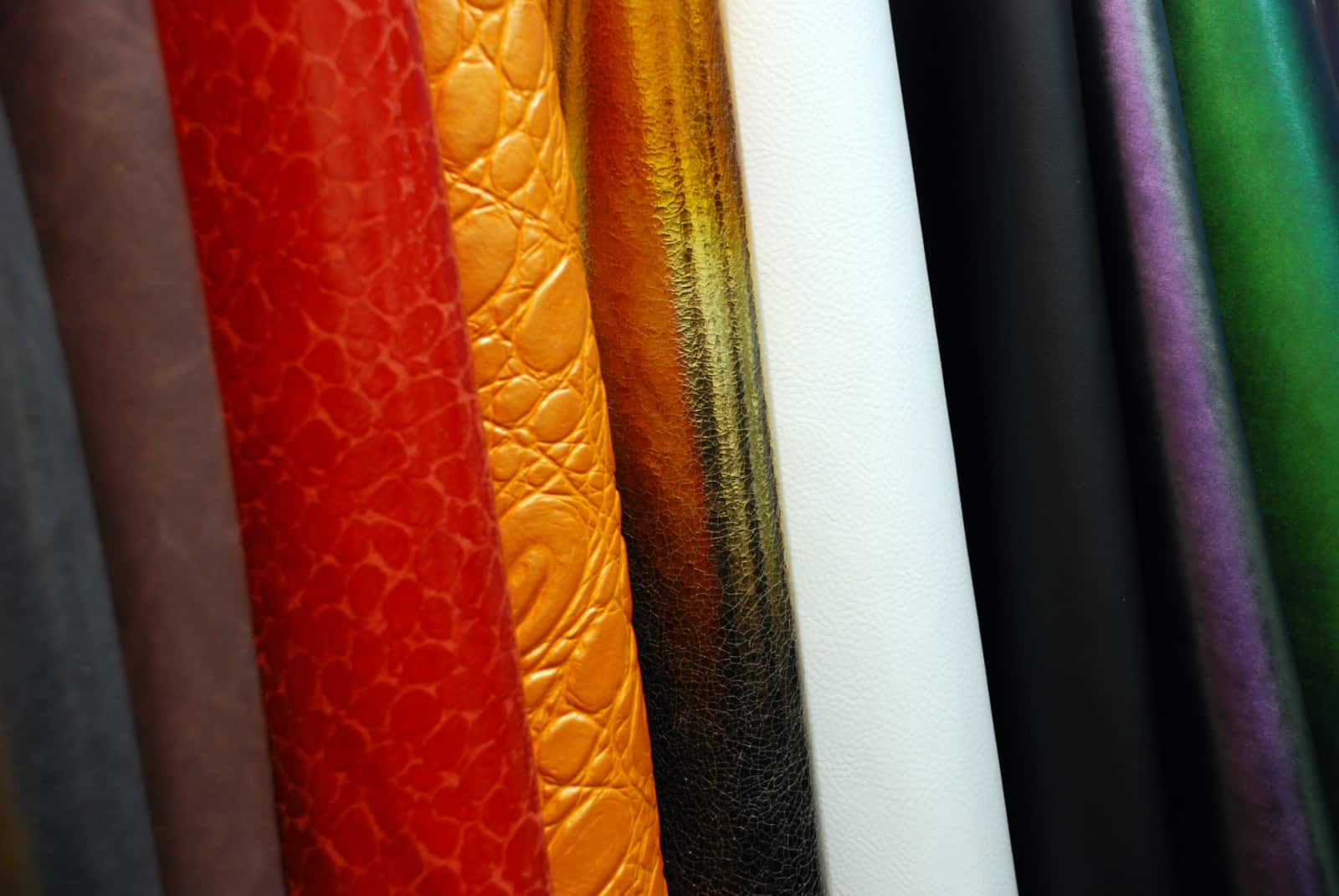
Illustrative image related to vinyl synthetic leather
How Do Eco-Friendly Vinyl Options Impact Purchasing Decisions?
Eco-friendly vinyl is made from recycled materials and designed to be non-toxic, appealing to businesses focused on sustainability. This type of vinyl can be an excellent choice for brands aiming to reduce their environmental impact while still delivering quality products. B2B buyers should consider the growing demand for sustainable materials, though they may face challenges in sourcing and availability compared to traditional vinyl types.
Key Industrial Applications of vinyl synthetic leather
| Industry/Sector | Specific Application of vinyl synthetic leather | Value/Benefit for the Business | Key Sourcing Considerations for this Application |
|---|---|---|---|
| Furniture & Upholstery | Sofa and chair coverings | Durable, easy to clean, and available in various designs | Look for stain resistance and eco-friendly options |
| Automotive | Car interiors (seats, dashboards) | Cost-effective, lightweight, and customizable | Ensure compliance with fire safety and durability standards |
| Fashion & Apparel | Clothing and accessories | High-end look with lower costs compared to genuine leather | Consider flexibility, breathability, and color options |
| Marine & Outdoor | Boat upholstery and outdoor furniture | Water-resistant, UV protection, and long-lasting | Assess weather resistance and ease of maintenance |
| Healthcare | Medical furniture coverings | Hygienic, easy to disinfect, and durable | Focus on antimicrobial properties and compliance with health regulations |
How is Vinyl Synthetic Leather Used in Furniture and Upholstery?
In the furniture industry, vinyl synthetic leather is widely used for sofa and chair coverings. This material offers a durable alternative to traditional leather, providing resistance against stains and spills, making it ideal for high-traffic areas. For international buyers, particularly from regions like Africa and South America, sourcing options that emphasize eco-friendliness and a variety of textures and colors can be crucial in meeting local market demands.
What Role Does Vinyl Synthetic Leather Play in the Automotive Sector?
In the automotive sector, vinyl synthetic leather is commonly used in car interiors, including seats, dashboards, and door panels. Its lightweight nature contributes to fuel efficiency, while its customizable designs enhance the aesthetic appeal of vehicles. Buyers should prioritize sourcing materials that meet fire safety regulations and have been tested for durability, especially in hotter climates found in the Middle East and Africa.
How is Vinyl Synthetic Leather Transforming Fashion and Apparel?
The fashion and apparel industry utilizes vinyl synthetic leather for clothing and accessories, providing a stylish yet cost-effective alternative to genuine leather. This material is valued for its flexibility and variety, appealing to diverse consumer preferences. B2B buyers from Europe and South America should focus on suppliers that offer a range of colors and finishes, as well as ensure the fabric’s breathability for comfort in warmer climates.
In What Ways Does Vinyl Synthetic Leather Benefit Marine and Outdoor Applications?
Vinyl synthetic leather is increasingly popular in marine and outdoor applications, such as boat upholstery and outdoor furniture. Its water-resistant and UV-protective properties make it suitable for harsh outdoor conditions, ensuring longevity and ease of maintenance. Buyers in regions with humid climates, like parts of Africa and Southeast Asia, should look for materials that offer enhanced weather resistance to prolong the life of their investments.
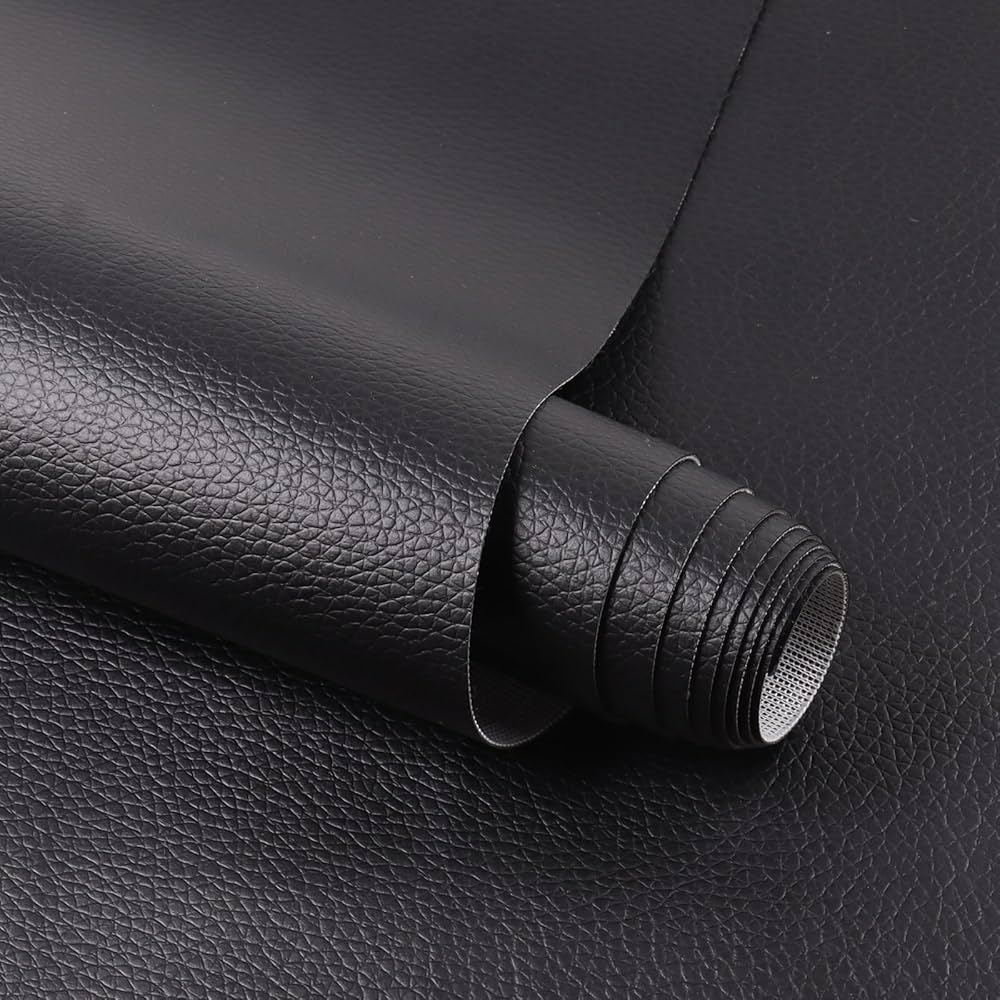
Illustrative image related to vinyl synthetic leather
Why is Vinyl Synthetic Leather Essential in Healthcare Settings?
In healthcare, vinyl synthetic leather is used for medical furniture coverings due to its hygienic properties, allowing for easy disinfection and durability under constant use. This material helps maintain a sterile environment, crucial for patient safety. B2B buyers in the healthcare sector should prioritize sourcing options that comply with health regulations and offer antimicrobial features, particularly in regions with varying healthcare standards.
3 Common User Pain Points for ‘vinyl synthetic leather’ & Their Solutions
Scenario 1: Quality Assurance in Bulk Orders of Vinyl Synthetic Leather
The Problem: When sourcing vinyl synthetic leather for large-scale projects, B2B buyers often face challenges related to quality consistency. Variations in color, texture, and durability can lead to significant discrepancies in the final product, which can jeopardize contracts and customer satisfaction. This issue is particularly pronounced when sourcing from multiple suppliers or manufacturers, where quality control may not be uniformly applied. Buyers may find themselves receiving batches that do not meet the specifications outlined in their orders, leading to wasted resources and potential reputational damage.
The Solution: To mitigate quality assurance issues, B2B buyers should establish a clear set of quality standards that suppliers must adhere to before placing bulk orders. This includes requesting samples from potential suppliers to evaluate the material’s performance, texture, and color consistency. Implementing a comprehensive vendor assessment process can also help in selecting reliable suppliers with a proven track record. Additionally, consider utilizing third-party quality inspection services to assess batches before they are shipped. This proactive approach ensures that the vinyl synthetic leather received aligns with your specifications, ultimately saving time and reducing financial losses.
Scenario 2: Environmental Concerns and Sustainability in Vinyl Synthetic Leather
The Problem: As the global market increasingly shifts toward sustainability, B2B buyers are often under pressure to source environmentally friendly materials. Many traditional vinyl synthetic leather products contain harmful chemicals and plastics that can contribute to environmental degradation. Buyers, especially those targeting eco-conscious customers or operating in regions with strict environmental regulations, may struggle to find sustainable alternatives that do not compromise on quality or performance.
The Solution: To address environmental concerns, buyers should prioritize sourcing vinyl synthetic leather made from eco-friendly materials, such as recycled plastics or biodegradable options. Engaging suppliers who provide transparency regarding their production processes and material sourcing can also be beneficial. Requesting certifications or documentation that verify the sustainability of the materials can further enhance credibility. Additionally, consider forming partnerships with suppliers who are committed to sustainability initiatives, which can lead to co-branding opportunities and strengthen your market position as an environmentally responsible business.
Scenario 3: Difficulty in Selecting the Right Vinyl Synthetic Leather for Specific Applications
The Problem: With a vast array of vinyl synthetic leather options available, B2B buyers often find it challenging to select the right type for specific applications, such as upholstery, automotive interiors, or apparel. Each application has unique requirements regarding durability, flexibility, and aesthetics, which can complicate the selection process. Misjudging the suitability of a material can lead to costly mistakes, product returns, and a negative impact on customer satisfaction.
The Solution: To streamline the selection process, buyers should invest time in thoroughly understanding the specific requirements of their intended application. Create a checklist that includes factors such as durability, weather resistance, ease of cleaning, and aesthetic appeal. Collaborating with suppliers who specialize in vinyl synthetic leather can provide valuable insights into which materials are best suited for particular applications. Additionally, leveraging digital tools and resources—such as material databases and online product configurators—can facilitate better decision-making. Engaging in product trials or pilot projects can also help assess the performance of the material in real-world conditions before committing to larger orders.
Strategic Material Selection Guide for vinyl synthetic leather
What Are the Key Materials Used in Vinyl Synthetic Leather Production?
Vinyl synthetic leather is a popular choice in various industries due to its versatility and performance characteristics. Understanding the different materials used in its production can help B2B buyers make informed decisions. Here, we analyze four common materials used in vinyl synthetic leather, focusing on their properties, advantages, limitations, and considerations for international buyers.
PVC (Polyvinyl Chloride)
Key Properties:
PVC is known for its excellent durability and resistance to abrasion, making it suitable for high-traffic applications. It can withstand a temperature range of -10°C to 60°C and offers good chemical resistance against oils and solvents.
Pros & Cons:
PVC is relatively low-cost and easy to manufacture, which makes it a favorite for budget-conscious projects. However, it can be less flexible than other materials, leading to potential cracking over time in extreme conditions. Additionally, its production process can release harmful chemicals, raising environmental concerns.
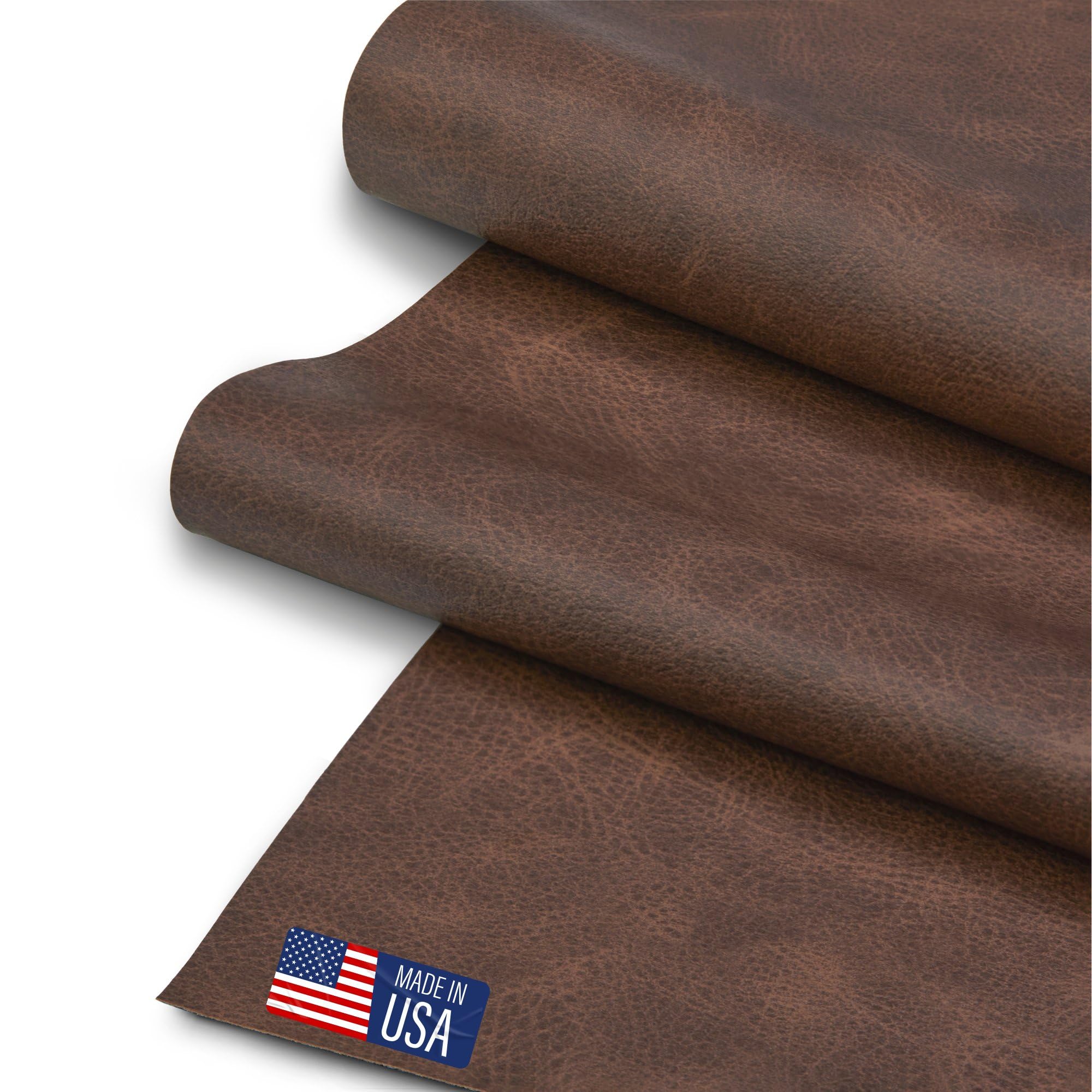
Illustrative image related to vinyl synthetic leather
Impact on Application:
PVC is commonly used in upholstery, automotive interiors, and outdoor furniture. Its waterproof nature makes it ideal for applications where moisture exposure is a concern.
Considerations for International Buyers:
Buyers in regions like Africa and South America should ensure compliance with local environmental regulations regarding PVC use. Familiarity with standards such as ASTM D2240 (for hardness) and ASTM D751 (for tensile strength) is crucial for ensuring product quality.
PU (Polyurethane)
Key Properties:
Polyurethane synthetic leather is known for its superior flexibility and softness, with a temperature tolerance of -30°C to 80°C. It also has good resistance to UV light and aging, making it suitable for outdoor use.
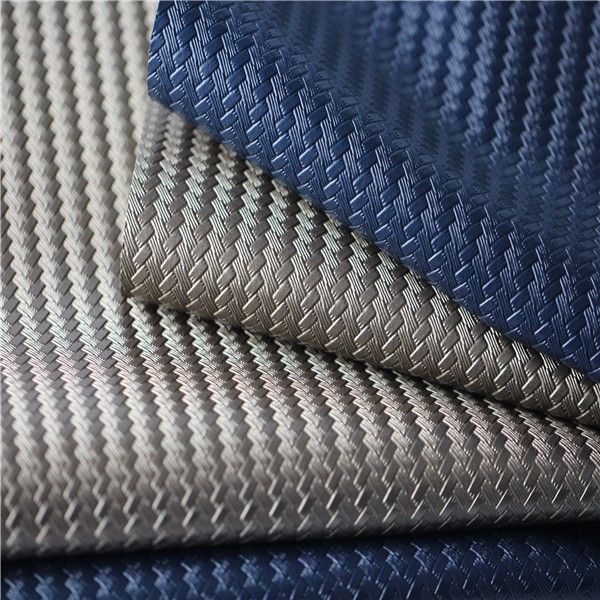
Illustrative image related to vinyl synthetic leather
Pros & Cons:
PU offers a high-end look and feel, often mimicking real leather closely. However, it tends to be more expensive than PVC and may require more complex manufacturing processes. Its durability can vary significantly based on the formulation used.
Impact on Application:
PU is widely used in fashion, automotive seating, and high-end upholstery. Its aesthetic appeal makes it a preferred choice for luxury applications.
Considerations for International Buyers:
Buyers from Europe and the Middle East should be aware of compliance with REACH regulations concerning chemical safety. Understanding the specific performance standards like ISO 5402 (for abrasion resistance) can also be beneficial.
TPO (Thermoplastic Olefin)
Key Properties:
TPO is a blend of polypropylene and rubber, offering excellent flexibility and UV resistance. It can withstand a temperature range of -40°C to 90°C, making it suitable for various climates.
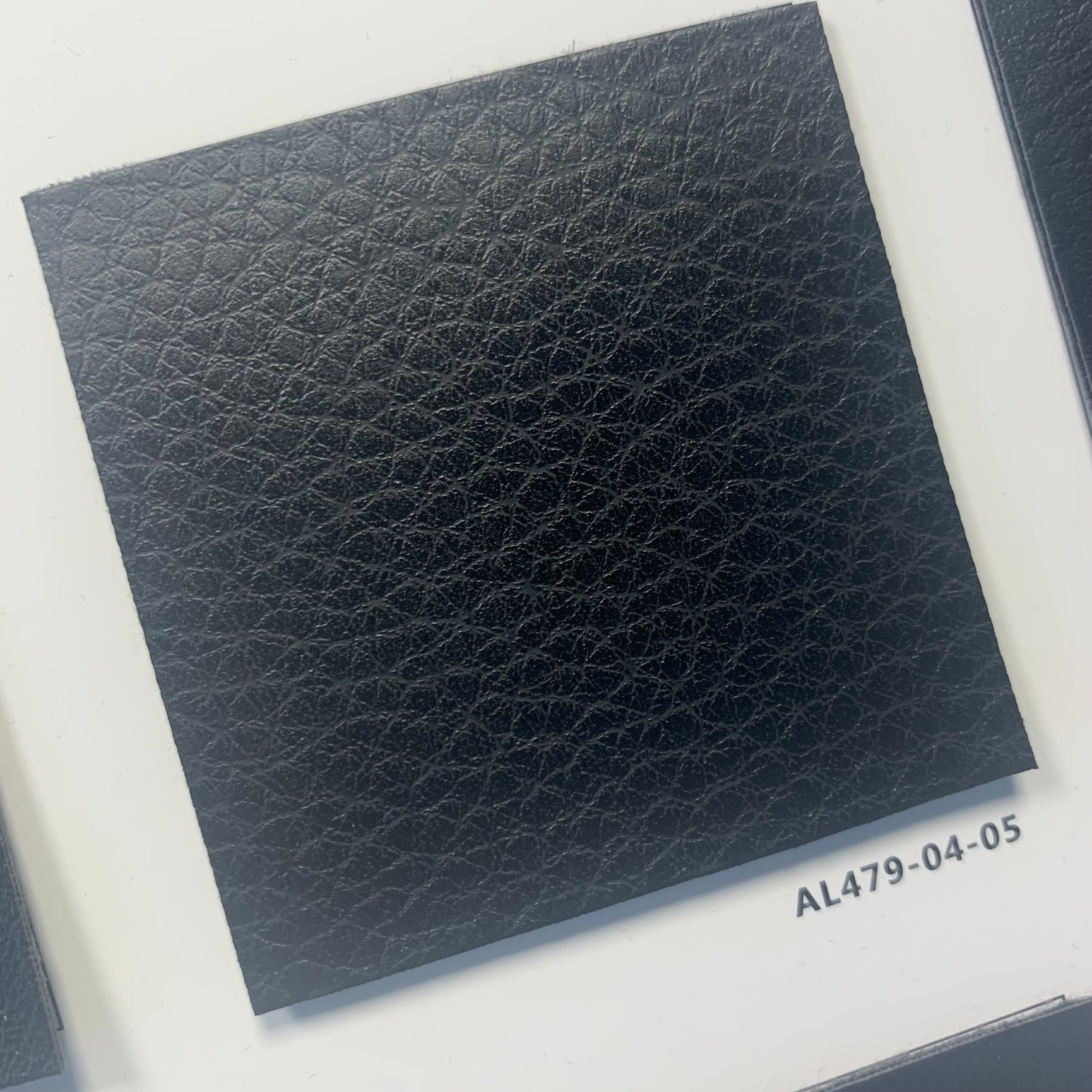
Illustrative image related to vinyl synthetic leather
Pros & Cons:
TPO is lightweight and environmentally friendly, as it is recyclable. However, it may not provide the same level of durability as PVC or PU, particularly in high-stress applications. Its manufacturing process can also be more complex.
Impact on Application:
TPO is often used in automotive interiors and outdoor applications due to its weather resistance. Its lightweight nature makes it ideal for products where weight reduction is critical.
Considerations for International Buyers:
Buyers in regions like Africa and the Middle East should consider TPO’s recyclability as a selling point in environmentally conscious markets. Familiarity with local recycling regulations can enhance marketability.
EVA (Ethylene Vinyl Acetate)
Key Properties:
EVA is known for its excellent elasticity and resistance to UV light and cracking. It can operate effectively within a temperature range of -40°C to 80°C.
Pros & Cons:
EVA is lightweight and offers good cushioning, making it ideal for applications requiring comfort. However, it may not be as durable as PVC or PU in high-wear environments, and its cost can be moderate to high depending on the formulation.
Impact on Application:
EVA is commonly used in footwear, bags, and soft furnishings where comfort and flexibility are prioritized.
Considerations for International Buyers:
Buyers should ensure compliance with local safety standards, particularly in the footwear industry. Knowledge of ASTM D3574 (for physical properties) can help in selecting the right EVA product.
Summary Table
| Material | Typical Use Case for vinyl synthetic leather | Key Advantage | Key Disadvantage/Limitation | Relative Cost (Low/Med/High) |
|---|---|---|---|---|
| PVC | Upholstery, automotive interiors, outdoor furniture | Low-cost, durable | Less flexible, environmental concerns | Low |
| PU | Fashion, automotive seating, high-end upholstery | High-end look and feel | More expensive, variable durability | Alta |
| TPO | Automotive interiors, outdoor applications | Lightweight, recyclable | Lower durability in high-stress applications | Medium |
| EVA | Footwear, bags, soft furnishings | Excellent elasticity, comfort | Moderate durability, higher cost | Medium |
This guide provides a comprehensive overview of the key materials used in vinyl synthetic leather, equipping international B2B buyers with the insights needed to make strategic purchasing decisions.
In-depth Look: Manufacturing Processes and Quality Assurance for vinyl synthetic leather
What Are the Main Stages in the Manufacturing Process of Vinyl Synthetic Leather?
The manufacturing process of vinyl synthetic leather involves several key stages that ensure the final product meets the durability and aesthetic requirements of various applications. The primary stages include material preparation, forming, assembly, and finishing.
-
Material Preparation: The process begins with the selection of raw materials, primarily polyvinyl chloride (PVC) or polyurethane (PU). These materials are often combined with plasticizers, stabilizers, and pigments to enhance flexibility, durability, and appearance. The raw materials are thoroughly mixed to achieve a homogeneous blend, which is crucial for the quality of the final product.
-
Forming: Once the materials are prepared, they undergo a forming process. This can be achieved through techniques such as calendering, where the mixture is passed through a series of rollers to create a thin film. Alternatively, extrusion methods can be used to produce sheets of varying thicknesses. The choice of technique depends on the desired characteristics of the vinyl synthetic leather, such as thickness, texture, and flexibility.
-
Assembly: After forming, the vinyl sheets are cut and assembled according to specific product designs. This stage may involve laminating the vinyl with backing materials such as woven fabrics or non-wovens to enhance strength and texture. The assembly process can also include embossing or printing to achieve desired patterns and finishes, allowing for a wide range of aesthetic options.
-
Finishing: The final stage involves applying surface treatments to enhance durability and appearance. This can include coatings that provide water resistance, UV protection, and anti-scratch properties. The finishing process is essential for ensuring that the synthetic leather can withstand everyday wear and tear while maintaining its visual appeal.
What Quality Control Measures Are Essential in Vinyl Synthetic Leather Manufacturing?
Quality control (QC) is vital in the manufacturing of vinyl synthetic leather to ensure that products meet both international standards and customer expectations. A robust QC system typically includes several checkpoints and testing methods.
-
International Standards Compliance: Adhering to international standards such as ISO 9001 is crucial for manufacturers targeting global markets. ISO 9001 outlines the requirements for a quality management system, emphasizing customer satisfaction and continuous improvement. Other relevant certifications may include CE marking for safety standards in Europe and API standards for specific industrial applications.
-
Quality Control Checkpoints: The QC process often includes three main checkpoints:
– Incoming Quality Control (IQC): This stage involves inspecting raw materials before production begins. Ensuring that materials meet specified standards is critical for preventing defects in the final product.
– In-Process Quality Control (IPQC): During manufacturing, regular checks are performed to monitor the production process and identify any deviations from quality standards. This proactive approach helps in addressing issues before they impact the final product.
– Final Quality Control (FQC): After production, finished products undergo rigorous testing to ensure they meet all quality specifications. This includes visual inspections, physical testing for durability, and assessments for compliance with safety standards. -
Common Testing Methods: Manufacturers employ various testing methods to assess the quality of vinyl synthetic leather. These may include:
– Tensile Strength Tests: To evaluate the material’s resistance to breaking under tension.
– Abrasion Resistance Tests: To measure how well the surface withstands wear and tear.
– Waterproofing Tests: To ensure that the material does not absorb water.
– Colorfastness Tests: To verify that colors remain stable under exposure to light and washing.
How Can B2B Buyers Verify Supplier Quality Control?
For international B2B buyers, particularly those from regions like Africa, South America, the Middle East, and Europe, verifying the quality control practices of suppliers is essential. Here are several methods to ensure supplier reliability:
-
Conducting Audits: Regular audits of suppliers can help buyers assess their manufacturing processes and quality control measures. This can be done through on-site visits or third-party audit services that specialize in quality assessments.
-
Requesting Quality Reports: Suppliers should be able to provide detailed quality reports that outline their QC processes, testing results, and compliance with international standards. This documentation is crucial for understanding the supplier’s commitment to quality.
-
Engaging Third-Party Inspection Services: Utilizing third-party inspection agencies can provide an unbiased evaluation of the supplier’s products and processes. These agencies can conduct inspections at various stages of production, offering buyers peace of mind regarding product quality.
-
Understanding QC Certification Nuances: Different regions may have specific certification requirements. For instance, certifications like CE are essential for the European market, while other regions may prioritize different standards. Buyers should be well-informed about these nuances to ensure compliance and avoid potential trade barriers.
What Are the Key Considerations for International Buyers in the Vinyl Synthetic Leather Market?
When sourcing vinyl synthetic leather, international B2B buyers should consider several factors that can impact their purchasing decisions:
-
Material Composition: Understanding the differences between PVC and PU synthetic leathers is crucial. PVC is often more affordable and durable, while PU provides a more luxurious feel but may come at a higher cost. Buyers should align material choices with their product requirements and target market preferences.
-
Supplier Reputation: Researching a supplier’s reputation and history in the industry can provide insights into their reliability and product quality. Reviews, testimonials, and case studies from other buyers can be valuable resources.
-
Customization Capabilities: Many B2B buyers require customized solutions to meet specific design and functionality needs. Assessing a supplier’s ability to accommodate custom orders in terms of colors, textures, and finishes is essential for ensuring the final product aligns with brand expectations.
-
Sustainability Practices: Increasingly, buyers are looking for eco-friendly options in synthetic materials. Suppliers that incorporate sustainable practices, such as using recycled materials or low-VOC processes, can be more appealing in today’s environmentally conscious market.
By understanding the manufacturing processes and quality assurance protocols, international B2B buyers can make informed decisions, ensuring they procure high-quality vinyl synthetic leather that meets their specific needs and standards.
Practical Sourcing Guide: A Step-by-Step Checklist for ‘vinyl synthetic leather’
Introducción
When sourcing vinyl synthetic leather, a strategic approach is essential for ensuring that you select the best materials that meet your project requirements. This guide provides a practical step-by-step checklist designed specifically for B2B buyers in diverse markets such as Africa, South America, the Middle East, and Europe. By following these steps, you can streamline your sourcing process and make informed decisions.
Step 1: Define Your Technical Specifications
Establishing clear technical specifications is the first critical step in sourcing vinyl synthetic leather. Determine the intended use of the material, such as upholstery, automotive, or fashion, as each application may require different properties. Consider aspects like thickness, texture, color, and performance characteristics such as water resistance and durability.
- Key Considerations:
- Understand the environmental conditions where the material will be used.
- Identify any industry-specific compliance standards.
Step 2: Research Potential Suppliers
Conduct thorough research to identify reputable suppliers of vinyl synthetic leather. Utilize industry directories, trade shows, and online marketplaces to compile a list of potential partners. Focus on suppliers with a proven track record in quality and service, especially those who cater to your target markets.
- Look For:
- Positive customer reviews and ratings.
- Industry certifications that reflect quality standards.
Step 3: Evaluate Sample Quality
Request samples from shortlisted suppliers to evaluate the quality of their vinyl synthetic leather. Assess the samples based on your defined specifications, paying attention to texture, color fidelity, and overall finish. This step helps you avoid potential quality issues before making a bulk order.
- Considerations:
- Test samples for durability and maintenance requirements.
- Compare samples from multiple suppliers to identify the best options.
Step 4: Verify Supplier Certifications
Before finalizing a supplier, verify their certifications and compliance with international standards. Certifications such as ISO, REACH, and others can provide assurance of quality and environmental responsibility. This step is crucial in mitigating risks associated with sourcing materials.
- Key Actions:
- Request copies of relevant certifications.
- Confirm the validity of certifications through independent sources.
Step 5: Negotiate Terms and Conditions
Engage in negotiations to establish favorable terms and conditions with your selected supplier. Discuss pricing, payment terms, delivery schedules, and return policies. Ensure that all agreements are clearly documented to avoid misunderstandings later on.
- Essential Points:
- Be transparent about your budget and expectations.
- Consider the total cost of ownership, including shipping and tariffs.
Step 6: Conduct a Trial Order
Before committing to a large purchase, place a trial order to assess the supplier’s responsiveness and the quality of the product. This trial run can provide insights into the supplier’s operational capabilities and help establish a working relationship.
- What to Monitor:
- Timeliness of delivery and adherence to agreed specifications.
- Quality control measures taken by the supplier during production.
Step 7: Establish a Communication Plan
Once you have finalized your supplier, establish a clear communication plan to ensure ongoing collaboration. Regular updates and feedback can help address any issues promptly and foster a strong partnership.
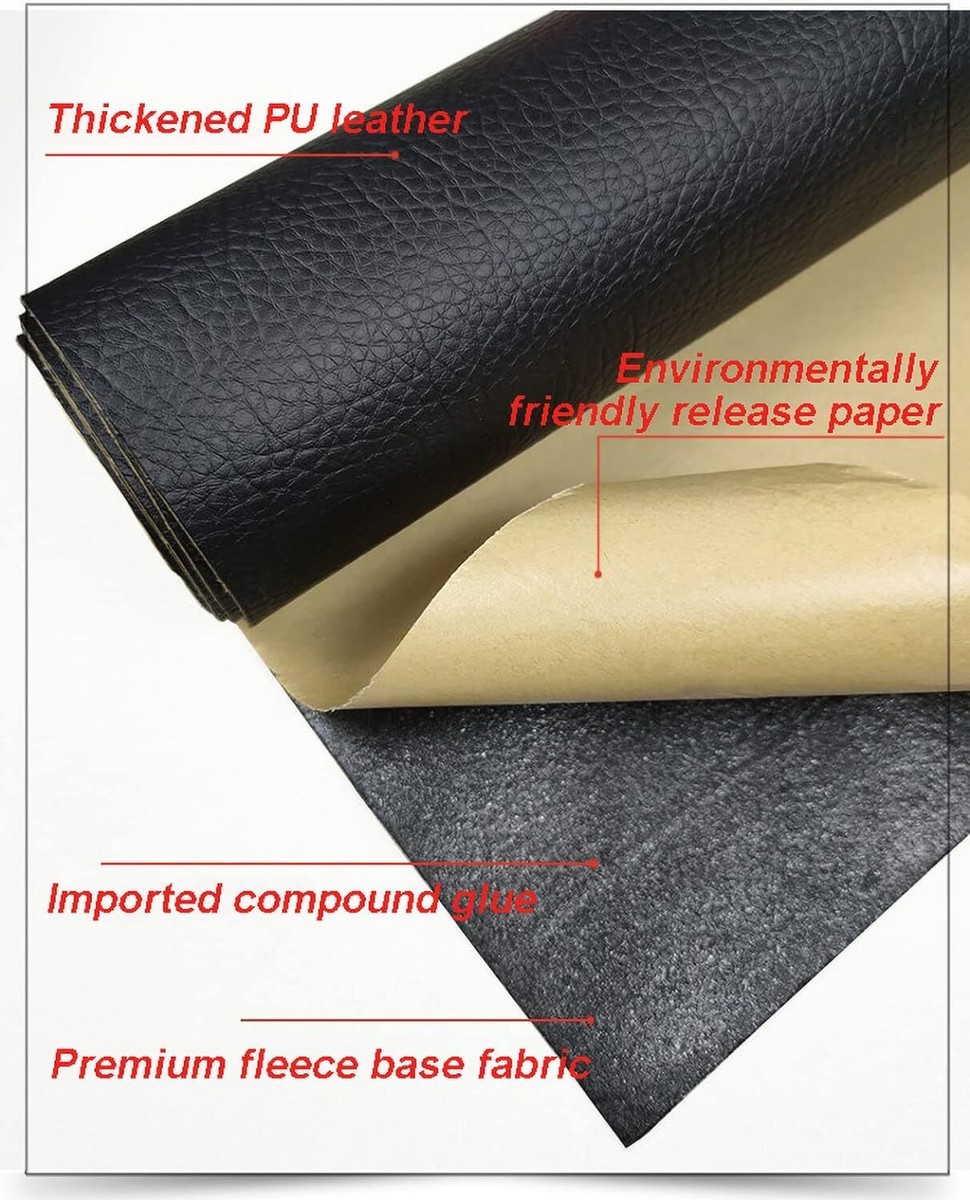
Illustrative image related to vinyl synthetic leather
- Consider:
- Setting up regular check-ins to discuss performance.
- Utilizing project management tools for better coordination.
By following this checklist, you can enhance your sourcing strategy for vinyl synthetic leather, ensuring that you select high-quality materials that align with your business objectives.
Comprehensive Cost and Pricing Analysis for vinyl synthetic leather Sourcing
What Are the Key Cost Components in Vinyl Synthetic Leather Sourcing?
When sourcing vinyl synthetic leather, understanding the cost structure is crucial for effective budgeting and pricing negotiations. The primary cost components include:
-
Materials: The choice of vinyl resin and additives significantly influences the base material cost. High-quality, eco-friendly options typically command a premium price, while standard PVC may be more economical but less durable.
-
Labor: Labor costs vary depending on the region of production. Countries with lower labor costs may offer more competitive pricing, but this can affect the overall quality and consistency of the product.
-
Manufacturing Overhead: This includes expenses related to production facilities, utilities, and administrative costs. Efficient manufacturing processes can help minimize these overheads, affecting the final price.
-
Tooling: Custom molds and cutting tools may be required for specific designs. These initial investments can be significant, particularly for low-volume orders, but are critical for ensuring precision and quality in production.
-
Quality Control (QC): Ensuring product quality requires investment in QC processes, which may include testing for durability, colorfastness, and compliance with safety standards. Robust QC can increase costs but ultimately leads to better customer satisfaction and reduced returns.
-
Logistics: Shipping costs can vary widely based on distance, shipping method, and the volume of the order. International buyers should consider the total landed cost, including tariffs and duties, which can significantly impact pricing.
-
Margin: Suppliers typically include a profit margin in their pricing. Understanding typical margins within the industry can help buyers negotiate better deals.
How Do Price Influencers Impact Vinyl Synthetic Leather Pricing?
Several factors influence the pricing of vinyl synthetic leather, making it essential for buyers to understand these dynamics:
-
Volume and Minimum Order Quantity (MOQ): Suppliers often offer discounts for larger orders. Understanding the MOQ can help in negotiating better pricing, especially for bulk purchases.
-
Specifications and Customization: Custom designs, colors, or performance characteristics (like UV resistance or waterproofing) can increase costs. Buyers should clarify their specifications upfront to avoid unexpected price increases.
-
Material Quality and Certifications: Higher quality materials and certifications (e.g., eco-friendly labels, compliance with international safety standards) typically lead to higher prices. Buyers should weigh the benefits against the cost.
-
Supplier Factors: Supplier reputation, reliability, and history can influence pricing. Established suppliers may charge a premium for their perceived quality and service levels.
-
Incoterms: Understanding the chosen Incoterm (e.g., FOB, CIF) is crucial as it dictates who bears the shipping costs and risk. This can significantly affect the total cost of ownership.
What Are the Best Buyer Tips for Negotiating Vinyl Synthetic Leather Prices?
For international B2B buyers, particularly from regions like Africa, South America, the Middle East, and Europe, employing effective negotiation strategies can lead to significant savings:
-
Research and Benchmarking: Before negotiations, research market prices and benchmark against multiple suppliers. This data empowers buyers during discussions and helps to validate pricing.
-
Focus on Total Cost of Ownership (TCO): Consider the long-term costs associated with the material, including durability, maintenance, and potential waste. A higher initial price may yield savings over time due to lower replacement rates.
-
Leverage Relationships: Building strong relationships with suppliers can facilitate better terms and pricing. Long-term partnerships often lead to loyalty discounts and improved service.
-
Be Open to Alternatives: While specific materials may be preferred, being open to alternative options can unlock cost savings. Suppliers may offer similar quality materials at lower prices.
-
Negotiate Payment Terms: Flexible payment terms can help manage cash flow, especially for large orders. Discussing extended payment periods or installment plans can ease financial pressure.
Disclaimer for Indicative Prices
The prices mentioned in this analysis are indicative and can vary based on market conditions, supplier policies, and specific order requirements. Buyers are encouraged to conduct thorough market research and engage directly with suppliers for the most accurate and current pricing information.
Alternatives Analysis: Comparing vinyl synthetic leather With Other Solutions
Exploring Viable Alternatives to Vinyl Synthetic Leather for B2B Buyers
When considering materials for upholstery, fashion, or other applications, it is vital to understand the available options. Vinyl synthetic leather is a popular choice due to its versatility, durability, and aesthetic appeal. However, alternative solutions may better suit specific needs based on performance, cost, and ease of use. Below, we compare vinyl synthetic leather with two viable alternatives: polyurethane (PU) leather and genuine leather.
| Comparison Aspect | Vinyl Synthetic Leather | Polyurethane (PU) Leather | Genuine Leather |
|---|---|---|---|
| Performance | Highly durable, water-resistant, and easy to clean; suitable for various environments. | Durable and flexible; offers good resistance to wear and tear but may not be as robust as vinyl. | Exceptional durability and breathability; ages well but can be prone to scratches and stains. |
| Cost | Generally more affordable, making it a cost-effective option for bulk purchases. | Moderate cost, typically higher than vinyl but lower than genuine leather. | Higher initial investment; long-term durability can offset initial costs. |
| Ease of Implementation | Easy to cut and sew; widely available in various colors and textures. | Similar ease of use; available in diverse styles but may require specialized sewing techniques. | Requires skilled labor for cutting and stitching; can be more challenging to work with. |
| Maintenance | Low maintenance; wipe clean with a damp cloth; resistant to stains. | Moderate maintenance; may require conditioning to maintain appearance. | High maintenance; needs regular conditioning and care to prevent damage. |
| Best Use Case | Ideal for furniture, automotive upholstery, and fashion accessories. | Suitable for bags, apparel, and furniture where a softer feel is desired. | Best for high-end fashion items, luxury furniture, and products requiring longevity. |
What Are the Advantages and Disadvantages of Polyurethane Leather Compared to Vinyl Synthetic Leather?
Polyurethane (PU) leather offers a softer texture and a more luxurious feel than vinyl synthetic leather. While it is still a synthetic material, PU leather is often perceived as more environmentally friendly due to the absence of PVC. However, PU leather may not be as durable as vinyl in high-wear applications and can be more susceptible to wear and tear over time. It is a great option for fashion and apparel but may not be the best choice for areas requiring high durability, such as automotive or heavy-use furniture.
How Does Genuine Leather Compare to Vinyl Synthetic Leather?
Genuine leather is renowned for its durability, breathability, and unique aging properties, which can enhance its aesthetic appeal over time. It provides a high-end look and feel that synthetic options cannot replicate. However, genuine leather comes with a higher price tag and requires more maintenance, including regular conditioning to prevent cracking and drying. Additionally, its vulnerability to scratches and stains may deter some buyers. For luxury applications where cost is less of a concern, genuine leather remains a preferred choice.
How Should B2B Buyers Choose the Right Material for Their Needs?
Selecting the appropriate material hinges on various factors, including the intended use, budget constraints, and maintenance capabilities. B2B buyers should evaluate the specific requirements of their projects and consider the long-term implications of their material choices. Vinyl synthetic leather may be the best option for cost-conscious projects requiring durability and ease of maintenance, while PU leather offers a balance between affordability and a premium feel. For high-end applications where longevity and aesthetics are paramount, genuine leather is unrivaled. By weighing these factors, buyers can make informed decisions that align with their business goals and customer expectations.
Essential Technical Properties and Trade Terminology for vinyl synthetic leather
What Are the Key Technical Properties of Vinyl Synthetic Leather for B2B Buyers?
When sourcing vinyl synthetic leather, understanding its technical properties is crucial for making informed purchasing decisions. Here are some of the most significant specifications to consider:
1. Material Grade
Material grade refers to the quality and composition of the vinyl. Common grades include PVC (polyvinyl chloride) and PU (polyurethane). PVC is typically more affordable and durable, suitable for applications that require a tough surface, while PU offers a more luxurious feel and better breathability. For B2B buyers, selecting the appropriate material grade can directly impact the longevity and performance of the final product, whether for upholstery, fashion, or automotive applications.
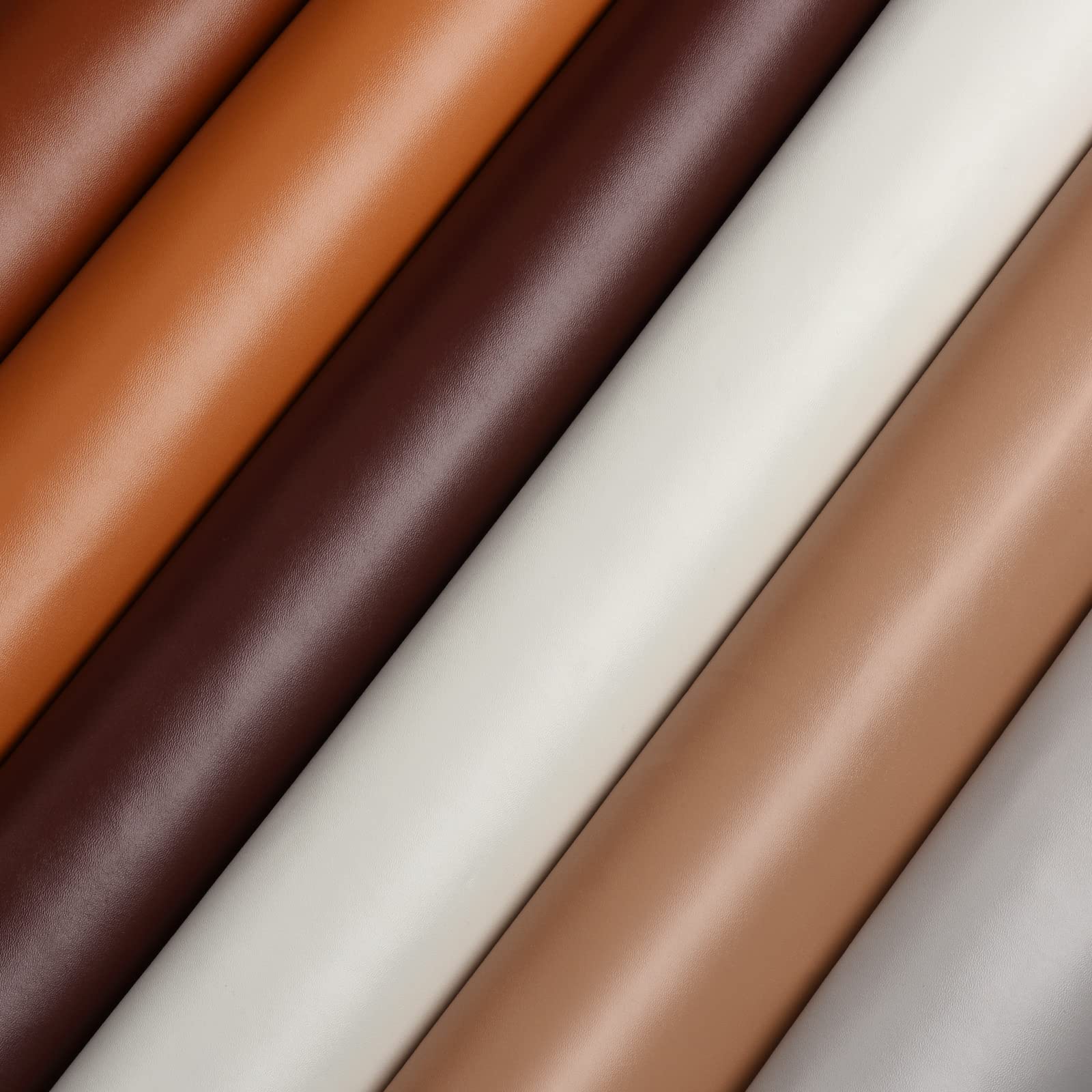
Illustrative image related to vinyl synthetic leather
2. Thickness
Thickness is a critical specification that affects both the durability and flexibility of the vinyl synthetic leather. Measured in millimeters (mm), standard thickness ranges from 0.5 mm to 1.5 mm or more. A thicker material may provide better wear resistance, while a thinner option can offer more flexibility for specific applications. Understanding thickness helps buyers assess the suitability of vinyl for their specific projects, ensuring they meet quality and performance expectations.
3. Tolerance
Tolerance refers to the acceptable variance in the dimensions of the vinyl synthetic leather. It is essential for ensuring that the material fits the intended application without issues. Tolerances can affect everything from cutting and sewing to application in manufacturing processes. For B2B buyers, ensuring that suppliers maintain tight tolerances can prevent costly production delays and material waste.
4. UV Resistance
UV resistance is a property that indicates how well the vinyl can withstand exposure to sunlight without degrading. This is particularly important for outdoor applications or in regions with high sun exposure. A vinyl product with high UV resistance will maintain its color and structural integrity over time. Buyers should prioritize UV resistance when sourcing materials for outdoor furniture, automotive interiors, or fashion items that are exposed to sunlight.
5. Flame Retardancy
Flame retardancy is a critical safety feature, especially in sectors like automotive and commercial upholstery. Vinyl synthetic leather can be treated with flame-retardant chemicals to meet specific safety standards. Understanding the flame retardancy ratings can help buyers ensure compliance with regulations, enhancing safety in their products.
What Are Common Trade Terms Related to Vinyl Synthetic Leather?
Familiarizing yourself with industry-specific terminology can streamline communication and negotiations. Here are some common terms used in the vinyl synthetic leather trade:
1. OEM (Original Equipment Manufacturer)
OEM refers to companies that manufacture products that are then marketed by another company under its brand name. Understanding OEM relationships is important for buyers looking for custom solutions or proprietary designs in vinyl synthetic leather products.
2. MOQ (Minimum Order Quantity)
MOQ denotes the smallest order that a supplier is willing to accept. This term is crucial for B2B buyers as it affects inventory management and cost efficiency. Knowing the MOQ helps businesses assess whether a supplier can meet their demand without incurring excessive costs.
3. RFQ (Request for Quotation)
An RFQ is a formal document sent to suppliers to request pricing and terms for specific products. This is an essential step in the sourcing process, allowing buyers to compare offers and select the most competitive option.
4. Incoterms (International Commercial Terms)
Incoterms are a set of predefined commercial terms published by the International Chamber of Commerce, defining the responsibilities of buyers and sellers in international transactions. Understanding these terms is vital for B2B buyers to clarify shipping responsibilities, risk management, and costs associated with the transport of vinyl synthetic leather.
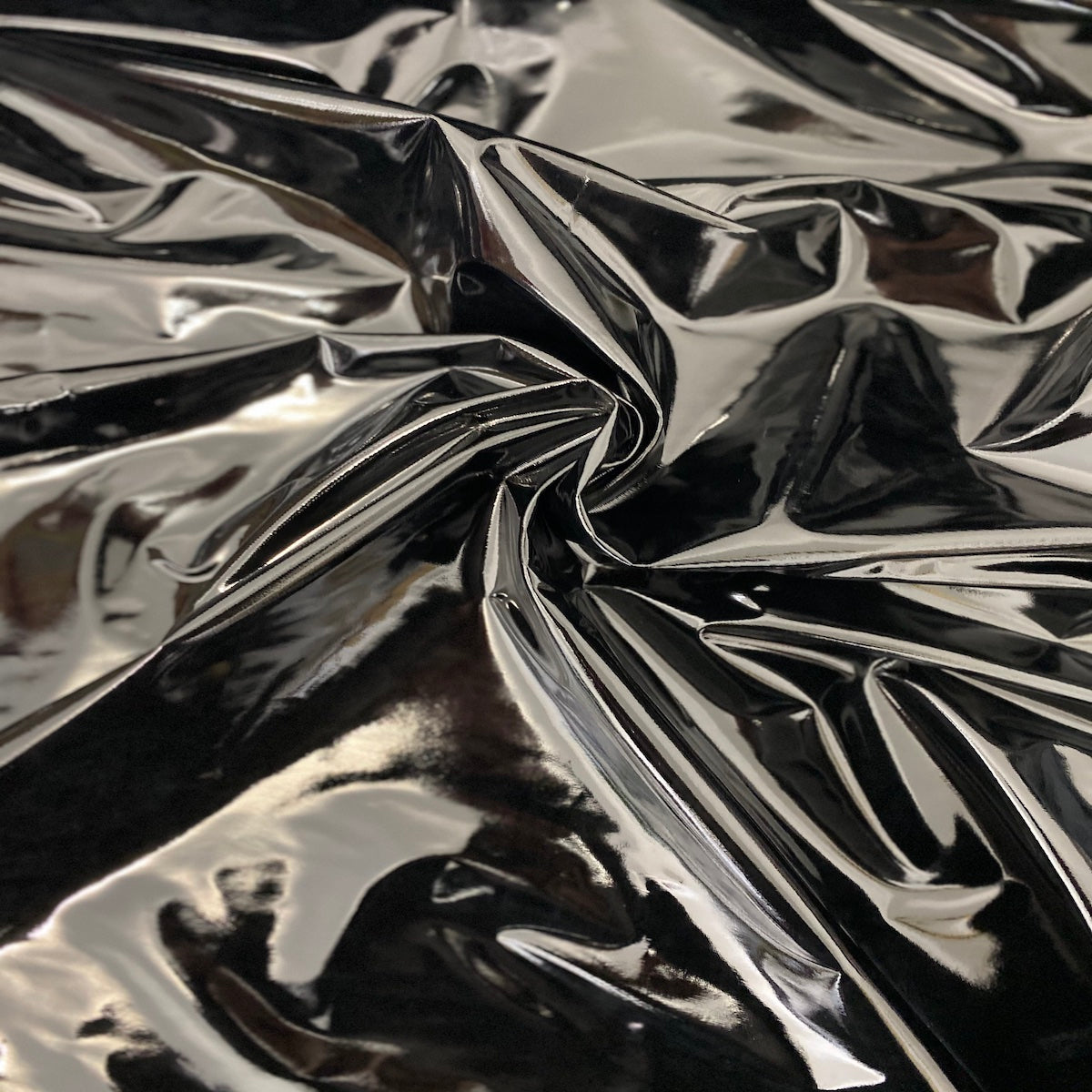
Illustrative image related to vinyl synthetic leather
5. Lead Time
Lead time refers to the duration between placing an order and receiving the goods. It is a critical factor in supply chain management, especially for businesses that rely on timely delivery for production schedules. Buyers should discuss lead times upfront to ensure that suppliers can meet their project timelines.
By grasping these technical properties and trade terms, B2B buyers can make more informed decisions when sourcing vinyl synthetic leather, ensuring they select the right materials for their specific needs while navigating the complexities of international trade effectively.
Navigating Market Dynamics and Sourcing Trends in the vinyl synthetic leather Sector
What Are the Current Market Dynamics and Key Trends in the Vinyl Synthetic Leather Sector?
The global vinyl synthetic leather market is experiencing robust growth, driven by increased demand from various industries, including automotive, furniture, and fashion. As international B2B buyers from regions such as Africa, South America, the Middle East, and Europe seek cost-effective and versatile materials, vinyl synthetic leather presents an attractive alternative to traditional leather. Key trends shaping the market include the rise of customization options, with suppliers offering a variety of colors, textures, and performance features, such as stain resistance and water repellency. This customization allows buyers to cater to diverse consumer preferences while ensuring product longevity.
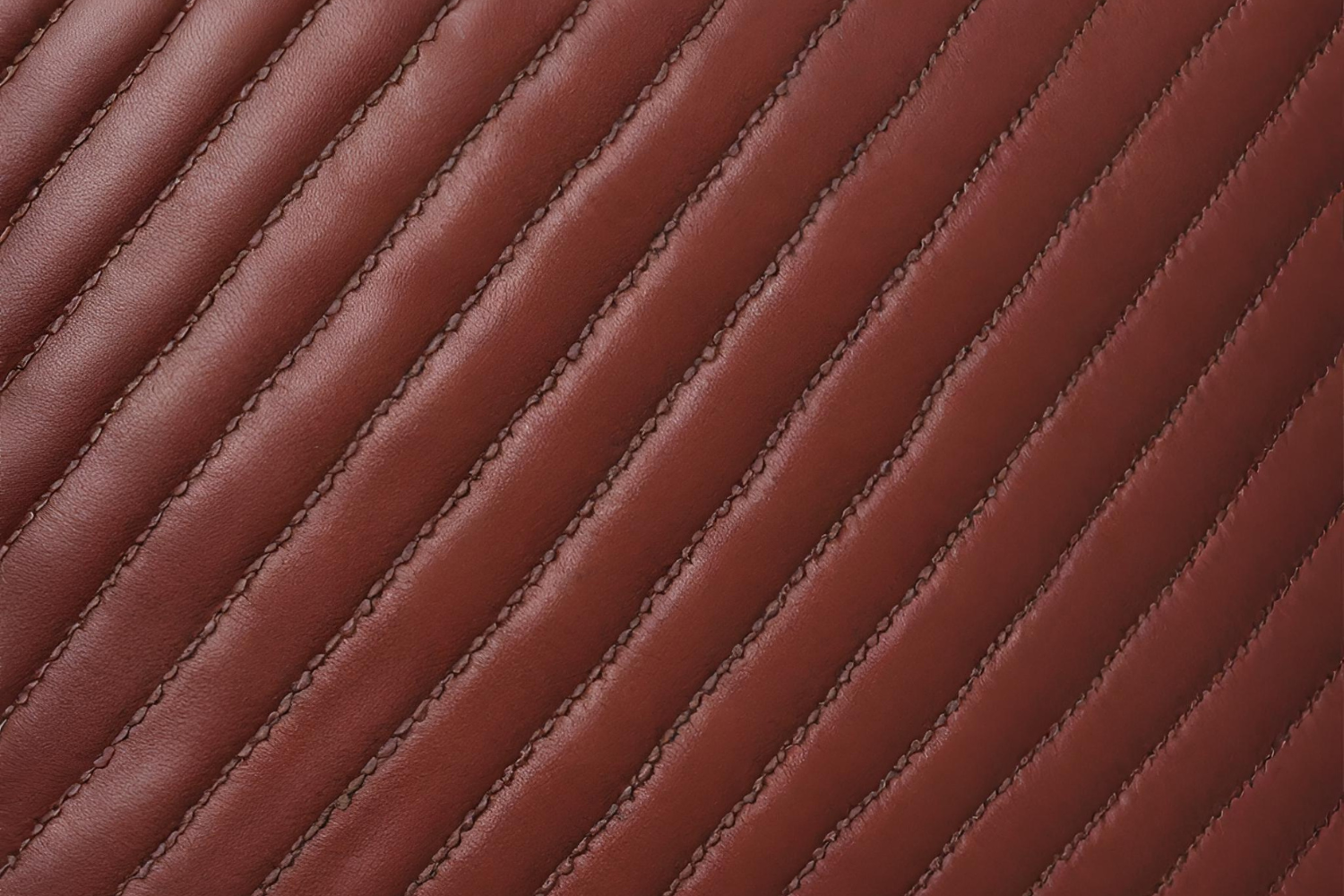
Illustrative image related to vinyl synthetic leather
Emerging technologies are also influencing sourcing strategies. Digital platforms are streamlining procurement processes, enabling buyers to efficiently compare suppliers, materials, and prices. Furthermore, advancements in manufacturing techniques, such as digital printing and 3D embossing, are enabling the creation of unique designs that meet the aesthetic demands of modern consumers. In addition, buyers are increasingly focusing on sourcing from suppliers who demonstrate transparency and efficiency in their supply chains, recognizing the importance of reliability in a fluctuating global market.
How Are Sustainability and Ethical Sourcing Influencing the Vinyl Synthetic Leather Market?
The importance of sustainability in the vinyl synthetic leather sector cannot be overstated. As environmental concerns gain traction globally, businesses are prioritizing eco-friendly materials and ethical sourcing practices. Vinyl synthetic leather, especially when produced using recycled materials or innovative manufacturing processes that minimize waste, offers a more sustainable option compared to traditional leather. International buyers are increasingly seeking suppliers who can provide certifications that verify the environmental impact of their products.
Incorporating sustainability into sourcing strategies not only enhances brand reputation but also aligns with the growing consumer demand for ethically produced goods. Certifications such as OEKO-TEX and GRS (Global Recycled Standard) are becoming crucial for suppliers to establish credibility in the market. Additionally, buyers should evaluate the lifecycle of vinyl synthetic leather products, considering aspects such as recyclability and the carbon footprint of production processes. By prioritizing sustainable sourcing, businesses can contribute to a circular economy while meeting the expectations of environmentally conscious consumers.
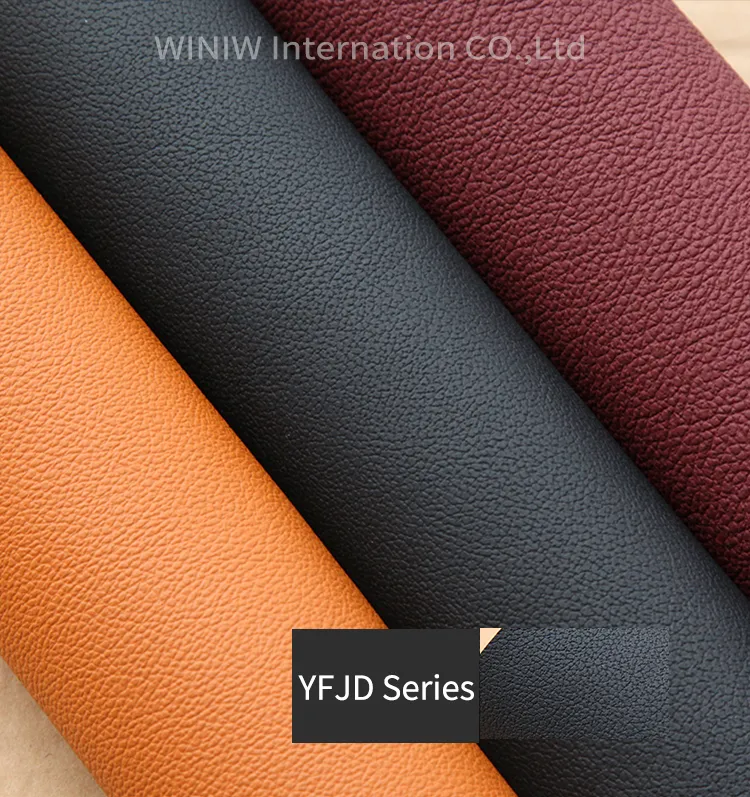
Illustrative image related to vinyl synthetic leather
What Is the Brief Evolution and History of Vinyl Synthetic Leather?
Vinyl synthetic leather has evolved significantly since its inception in the early 20th century. Initially developed as a cost-effective alternative to genuine leather, it gained popularity due to its versatility and ease of maintenance. Over the decades, advancements in polymer technology have enhanced the durability and aesthetic appeal of vinyl synthetic leather, allowing it to mimic the look and feel of real leather more closely.
The introduction of eco-friendly manufacturing processes and materials in recent years has further transformed the market, enabling suppliers to cater to the growing demand for sustainable products. As a result, vinyl synthetic leather is now widely used across various sectors, including automotive interiors, fashion apparel, and furniture upholstery, making it an essential material for B2B buyers looking to balance quality, cost, and environmental responsibility.
Frequently Asked Questions (FAQs) for B2B Buyers of vinyl synthetic leather
-
How do I solve quality issues with vinyl synthetic leather?
Quality issues can often arise from sourcing inferior materials or inadequate manufacturing processes. To mitigate this, conduct thorough supplier vetting by checking certifications, customer reviews, and factory audits. Request samples before placing bulk orders to assess the material’s durability, texture, and finish. Additionally, establish clear quality assurance protocols that include inspections at various production stages and a final inspection before shipment. Collaborating with suppliers who are ISO certified or have a proven track record can also enhance your quality assurance efforts. -
What is the best vinyl synthetic leather for upholstery?
The best vinyl synthetic leather for upholstery typically features high durability, water resistance, and easy maintenance. Look for materials that are specifically designed for heavy-use applications, such as those with 4-way stretch and stain resistance. Eco-friendly options are becoming increasingly popular, offering both style and sustainability. Brands that provide a range of textures and colors can help you match the upholstery to your design needs. Consider samples to evaluate the feel and performance before making a bulk purchase. -
What customization options are available for vinyl synthetic leather?
Many suppliers offer customization options such as color matching, embossing, and printing specific patterns on vinyl synthetic leather. When discussing customization, inquire about minimum order quantities (MOQs) and lead times, as these can vary significantly between suppliers. Be sure to communicate your design specifications clearly and request prototypes if necessary to ensure the final product meets your expectations. Custom options can enhance branding and product differentiation in competitive markets. -
What are the typical minimum order quantities (MOQs) for vinyl synthetic leather?
Minimum order quantities for vinyl synthetic leather can vary widely depending on the supplier and the specific product. Generally, MOQs can range from as low as 50 yards to several hundred yards for custom designs. It’s essential to discuss your needs with potential suppliers upfront to determine their flexibility. Some suppliers may offer lower MOQs for standard colors or patterns, while custom options may require larger quantities. Understanding MOQs can help you plan your inventory and budget effectively. -
What payment terms should I expect when sourcing vinyl synthetic leather?
Payment terms can vary significantly between suppliers, but common practices include a deposit upfront (usually 30-50%) with the balance due before shipment. Some suppliers may offer credit terms for established relationships. Be cautious with payment methods; using secure transactions like letters of credit can provide additional protection. Ensure that all payment terms are clearly outlined in your contract to avoid any misunderstandings. Discussing payment options early in the negotiation process can lead to more favorable terms. -
How do I ensure timely delivery of my vinyl synthetic leather orders?
To ensure timely delivery, it is crucial to establish a reliable logistics plan with your supplier. Discuss lead times and shipping methods during the negotiation phase to align expectations. Use suppliers with a proven track record of on-time delivery and consider building in buffer times for potential delays. Regular communication throughout the order process can help you stay informed about production progress and any issues that may arise. Additionally, consider using freight forwarders experienced in handling international shipments to streamline logistics. -
What quality assurance practices should I implement when sourcing vinyl synthetic leather?
Implementing robust quality assurance practices is essential when sourcing vinyl synthetic leather. Start by defining clear quality standards based on your product requirements. Schedule inspections at key production stages and perform a final quality check before shipment. Collaborate with suppliers who adhere to recognized quality management systems, such as ISO 9001. Keeping a record of quality metrics and supplier performance can also help you make informed decisions for future orders. -
How can I vet suppliers of vinyl synthetic leather effectively?
Vetting suppliers requires a multi-faceted approach. Start by researching potential suppliers online, checking their reputation through reviews and industry forums. Request references from previous clients and verify their business credentials. Conduct factory visits if possible, or utilize third-party inspection services to assess their manufacturing capabilities. Evaluate their responsiveness to inquiries and willingness to provide samples and documentation. Establishing a relationship based on trust and transparency is crucial for a successful partnership.
Top 7 Vinyl Synthetic Leather Manufacturers & Suppliers List
1. Folio Fabrics – Vinyl & Faux Leather Upholstery
Domain: foliofabrics.com
Registered: 2013 (12 years)
Introduction: Shop Vinyl & Faux Leather For Upholstery By The Yard – Folio Fabrics. Regular price: $26 – $46 per yard. Features include 4-way stretch, stain resistance, eco-friendly construction, and performance attributes. Applications include upholstery, home contract, outdoor, marine, auto, and healthcare. Available colors include Howell Saddle, Hubbard Latte, Cami Ebony, Hampton Fog, Greenwich Maple, Chad A…
2. Naugahyde – PU Leather & Faux Leather
Domain: decorativefabricsdirect.com
Registered: 2004 (21 years)
Introduction: PU Leather & Faux Leather | Vinyl Upholstery Fabric
– Terms: Free Shipping Coupon Code: SHIPFREE for Most $199 Orders
– Available Types: Faux Leather, Vinyl (PVC), Urethane, Polycarbonate, Genuine Leather, Bonded Leather
– Uses: Furniture, Automotive, Marine
– Brands: Naugahyde, Omnova Boltaflex, Nassimi, Spradling
– Color Options: Black, Gray, Blue, Turquoise, Aqua, Brown, Beige, Green, Orange, C…
3. VViViD – Faux Leather Products
Domain: vvividshop.com
Registered: 2014 (11 years)
Introduction: Faux Leather products available at VViViD Shop include various patterns and colors of marine vinyl fabric. Key products include: 1. VViViD+ Black Fine Grain Leather – From $14.94 2. VViViD+ Racing Red Fine Grain Leather – From $14.94 (Sold Out) 3. VViViD+ Classic Brown Fine Grain Leather – From $14.94 4. VViViD+ Silver Fine Grain Leather – From $14.94 5. Bycast65 Black Matte Top-Grain Pattern Faux…
4. Big Z – Faux Leather
Domain: blog.bigzfabric.com
Registered: 2010 (15 years)
Introduction: Faux Leather: Also known as leatherette or synthetic leather, made of a fabric base (polyester, cotton, or blend) coated with polyurethane (PU) or polyvinyl chloride (PVC). Offers better breathability, mimics real leather closely, available in various colors and finishes. Commonly used in apparel, accessories, and upholstery. Solid Fetish Wet Glossy Upholstery Faux Leather Fabric: High gloss face,…
5. Kiwibagineers – Vinyl & PU Faux Leather
Domain: kiwibagineers.co.nz
Introduction: Vinyl is a thermoplastic fabric, durable and stable, slightly thicker than other faux leathers. PU faux leather (Polyurethane) is an artificial leather, flexible, and imitates leather well. Vegan leather can be made from either vinyl or PU but check for guarantees. Vinyl is stiffer, requires little interfacing, and is great for structured projects. PU is thinner, has sideways stretch, and is used …
6. Fabricut – Faux Leather & Vinyl
7. Sailrite – Quality Faux Leather
Domain: sailrite.com
Registered: 1996 (29 years)
Introduction: Faux Leather, Vinyl Leather; Quality faux leather available in a variety of natural and bright colors; Suitable for upholstery applications like couches; Durable; All faux leather is in stock and ready to ship; Fabric samples available.
Strategic Sourcing Conclusion and Outlook for vinyl synthetic leather
In conclusion, strategic sourcing of vinyl synthetic leather offers international B2B buyers a pathway to enhance their product offerings while ensuring cost-effectiveness and sustainability. The versatility of vinyl synthetic leather, with its array of colors, textures, and high-performance features such as stain resistance and waterproofing, positions it as an invaluable asset for various applications—from upholstery to fashion.
Buyers should prioritize suppliers that provide quality assurance and eco-friendly options, aligning with the growing demand for sustainable materials in the global market. By leveraging a strategic sourcing approach, businesses can not only optimize their supply chains but also respond swiftly to changing consumer preferences.
Looking ahead, the vinyl synthetic leather market is poised for growth, driven by innovations in material technology and increasing consumer awareness. Now is the time for buyers from Africa, South America, the Middle East, and Europe to engage with reputable suppliers, explore diverse product lines, and capitalize on emerging trends. Embrace the potential of vinyl synthetic leather to elevate your business and meet the evolving demands of your customers.
Important Disclaimer & Terms of Use
⚠️ Important Disclaimer
The information provided in this guide, including content regarding manufacturers, technical specifications, and market analysis, is for informational and educational purposes only. It does not constitute professional procurement advice, financial advice, or legal advice.
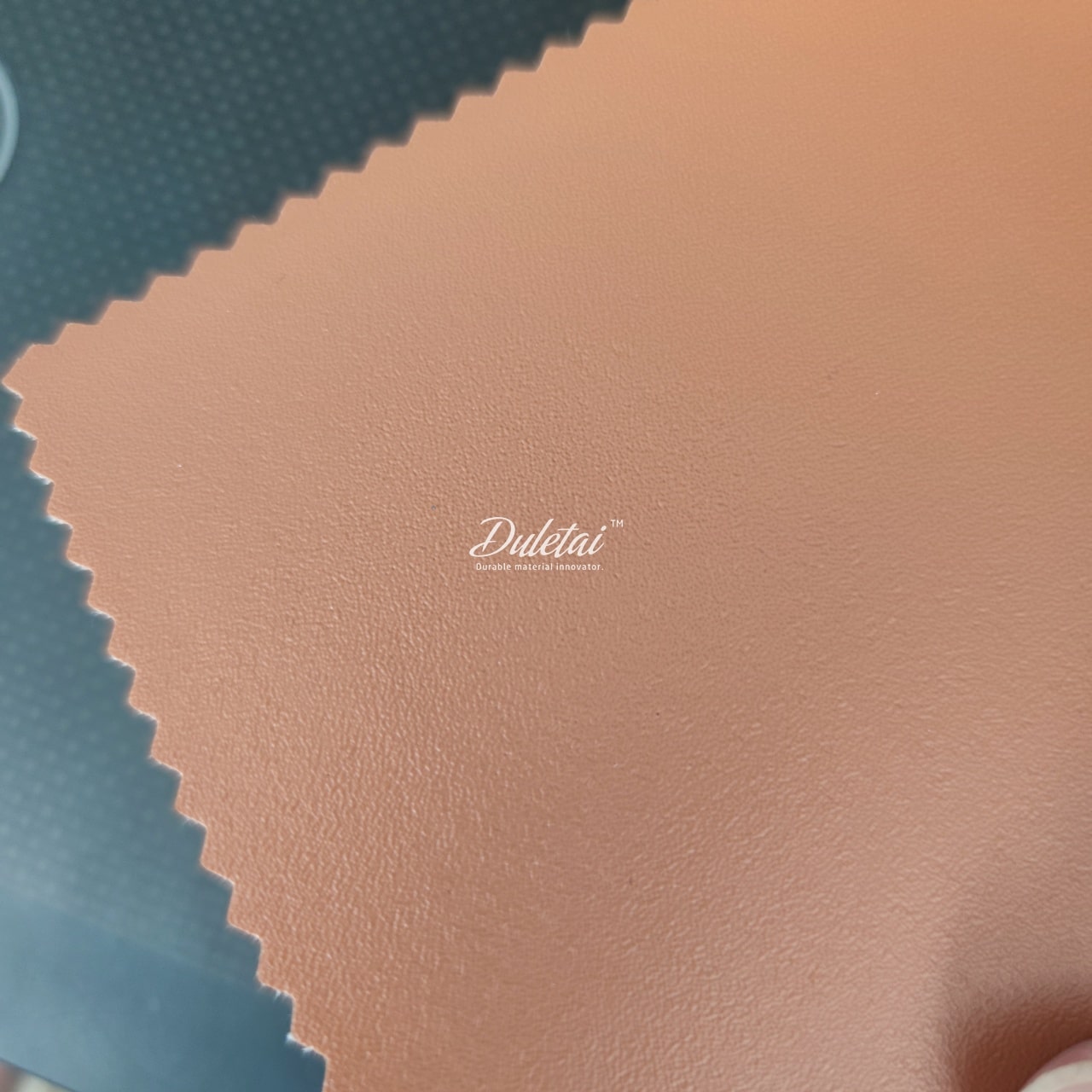
Illustrative image related to vinyl synthetic leather
While we have made every effort to ensure the accuracy and timeliness of the information, we are not responsible for any errors, omissions, or outdated information. Market conditions, company details, and technical standards are subject to change.
B2B buyers must conduct their own independent and thorough due diligence before making any purchasing decisions. This includes contacting suppliers directly, verifying certifications, requesting samples, and seeking professional consultation. The risk of relying on any information in this guide is borne solely by the reader.


